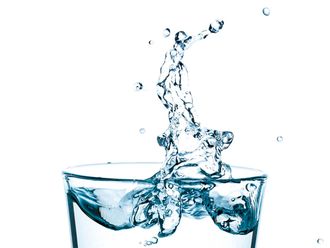
Your home could look spotlessly clean, but is it really? No matter how much time you spend cleaning up every nook and cranny, germs can still breed in places you probably least expected.
“As simple as it sounds, good hygiene can prevent serious illnesses and diseases,” said Manar Alkassar, Managing Director of Helpling, a cleaning service provider in the Middle East.
Alkassar takes us through the “germiest” places we could have missed and how to disinfect them:
The kitchen sink
The kitchen sink could possibly be dirtier than the toilet bowl. Most people disinfect toilet bowls but with kitchen sinks, most people tend to rinse with water and soap only.
Food particles from plates left to soak or rinsed from dishes can serve as a breeding ground for illness-causing bacteria, including E. coli and salmonella. They can spread on hands or food.
What to do
Sanitise your sink to prevent the spread of bacteria by using a solution of bleach and water or isopropyl alcohol (rubbing alcohol) to clean the surface of the kitchen sink.
Your toothbrush
You use your toothbrush twice a day and rinse it after every use, keeping it damp. Bacteria thrives on moist surfaces. Germs can easily reach your toothbrush, whether from your mouth or the air.
In addition, every time you flush the toilet, bacteria and virus-contaminated water droplets are sent into the air. These germs can float around in the bathroom for at least two hours after each flush before landing on surfaces, including your toothbrush.
What to do
Close the toilet lid before flushing and place your toothbrush in an area where it can air and dry, not too close to the toilet. You should also replace your toothbrush regularly, especially after you’ve been ill.
Your TV remote control
The TV remote control is probably the most touched and shared item in the house. It’s dropped on the floor, stuffed between the sofa cushions, coughed on and sneezed at. Everyone in the house touches it. Studies have shown that the remote control’s surface is among the germiest in the house.
What to do
Wipe the remote control with a bleach or alcohol wipe. Also, wash your hands regularly to protect yourself against germs.
Your computer keyboard
You probably eat at your computer, sneeze, cough and allow others to use it. Computer keyboards could be a health hazard. Researchers found that keyboards can be contaminated with a number of potentially harmful bacteria such as E. coli.
What to do
Always wash your hands before and after using your computer. If you eat or drink at your computer, ensure that you wipe the surface with bleach or alcohol wipes. Don’t forget to wipe the mouse as well.
“You can also take basic measures to protect yourself and your family from diseases that could spread in your home, like washing your hands regularly with soap and water, making sure you scrub your hands for no less than 20 seconds and taking care to include the areas between your fingers and under the nails,” Alkassar said.
You should also avoid touching your face, eyes and mouth after you’ve been touching objects in public places, she said.











